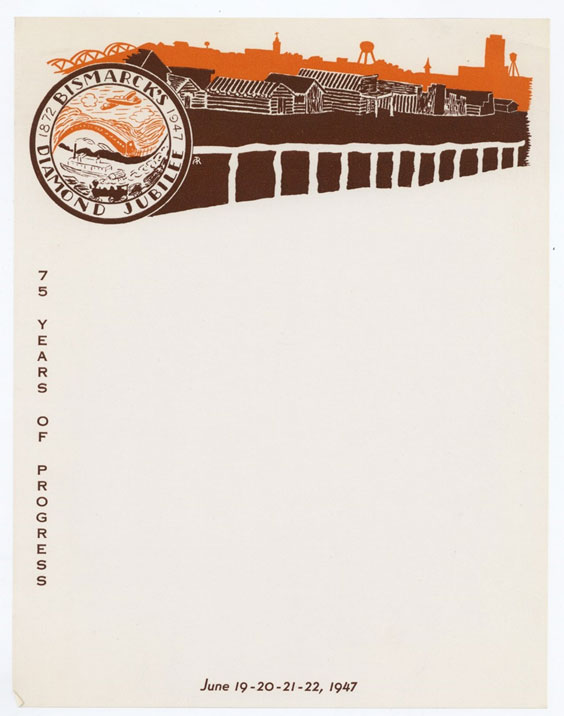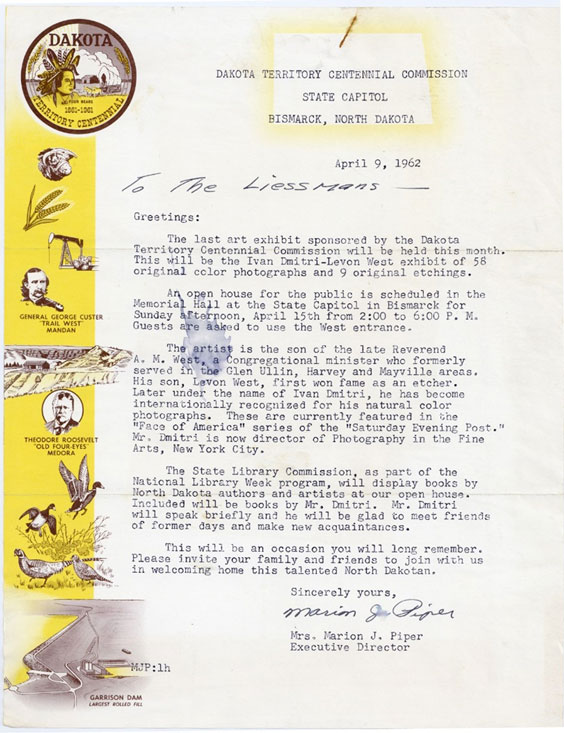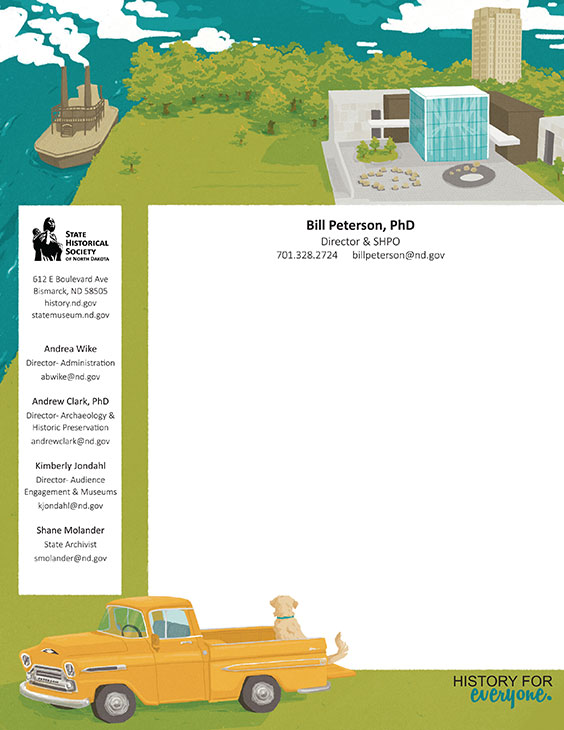I cannot count all the ways people can send an electronic message to one another these days. Email, text, Facebook Messenger, LinkedIn, Teams, Zoom, Twitter, direct message—the list seems endless. Even the once exalted method of the telephone has receded into a dim, distant place behind these other forms of messaging. People now regularly text me to see if I am able or willing to take a call. While most days I don’t feel particularly old, I fondly remember dial phones and the excitement of coming home to a blinking answering machine light! That all seems like ancient technology to me now.
On a personal level, I rarely see regular mail these days. I get forms and reports for review at the office, but personal mail is mostly just bills and junk punctuated a couple times a year with holiday or birthday cards. Truth is, I have received very few handwritten letters in the mail lately. But when I do get them, I treasure them. Before I came to the State Historical Society, I found that writing to other people the old-fashioned way—with paper, pen, and in cursive—brought me great joy. It turns out that it brought much happiness to the recipients of those letters as well. A couple of my friends confided that the letters meant more to them than I could have imagined.
My letter-writing habit got me thinking about stationery. I often used blank note cards or plain paper. But I wondered if something slightly more personalized might also fit the bill when it came to designing my director’s letterhead. I believe that answers to most of our issues in life can be found by looking back at our history. Most people think of archives as simply a way to source the past, but our State Archives contain thousands of examples of the very best historical graphic design as well. To this end, I asked Sarah Walker, head of reference services, for examples of stationery in our collections. Walker and Lindsay Meidinger, head of archival collections and information management, then served as sounding boards as I sifted through many samples. Just as I had suspected, I was richly rewarded with a plethora of beautiful, artistic, elegant, and professional examples of stationery that made me long for the days past when we communicated with each other by setting pen to paper and writing. TBH, BTW, NGL, those were the days—the days before we communicated primarily in emojis and acronyms! SMH.
A couple of the best examples I found included the stationery of the Lesmeister & Son Automobile Garage in Selz, North Dakota. I loved the graphics in this one with the old cars and the color. It just hollers “adventure.” I also liked the work on the Dakota Territory Centennial Commission stationery and other examples of company stationery that highlighted the organization’s officers. The Bismarck Diamond Jubilee graphic used the original streetscape of historic Bismarck to cleverly cast a shadow of the future Bismarck. What brilliant graphic design and use of color in that one! The steamboat and subtle other nuances in that letterhead caused my gaze to linger. Many businesses’ letterheads contained renderings of their buildings, indicating a great source of pride by the sender in the places they worked.

Lesmeister & Son Automobile Garage stationery, circa 1918. SHSND MSS 11354

Stationery made for Bismarck’s Diamond Jubilee celebrations in 1947. SHSND MSS 11354

Dakota Territory Centennial Commission stationery, 1961. SHSND MSS 11354
After looking at a few of these, Dannie Dzialo, a talented graphic artist who also works in the State Archives, and I sat down to discuss things we liked or didn’t like about the archived stationery. Reference staff also weighed in on what was attractive to them. And then we thought about a few things that are important to me. After some back and forth, Dzialo submitted the finished letterhead, which includes images of the state Capitol and ND Heritage Center & State Museum as well as the names of the agency’s departmental directors, people with whom I am honored and proud to be associated. These elements are mixed with a few others that have deep meaning to me, including, of course, my faithful Labrador retrievers and a steamboat, an expression of my early love of maritime and North Dakota history.

My new director’s stationery reflects my love of North Dakota history as well as other elements from my past with deep meaning to me.

